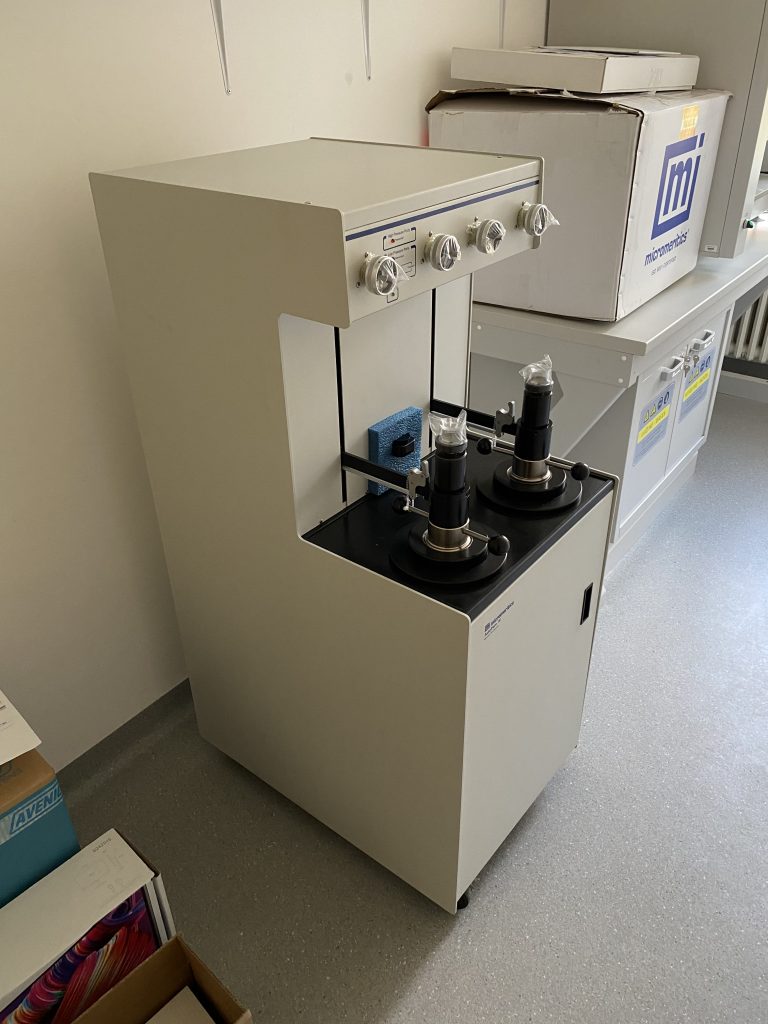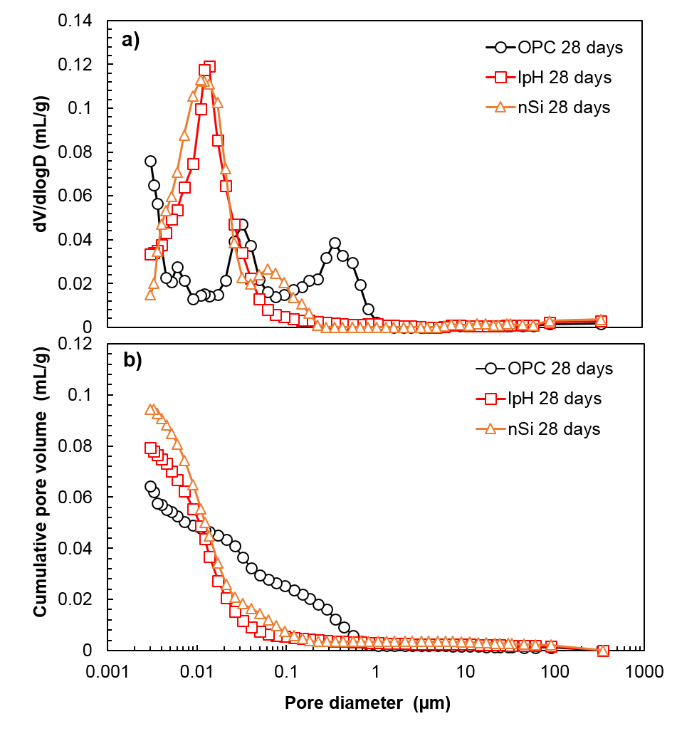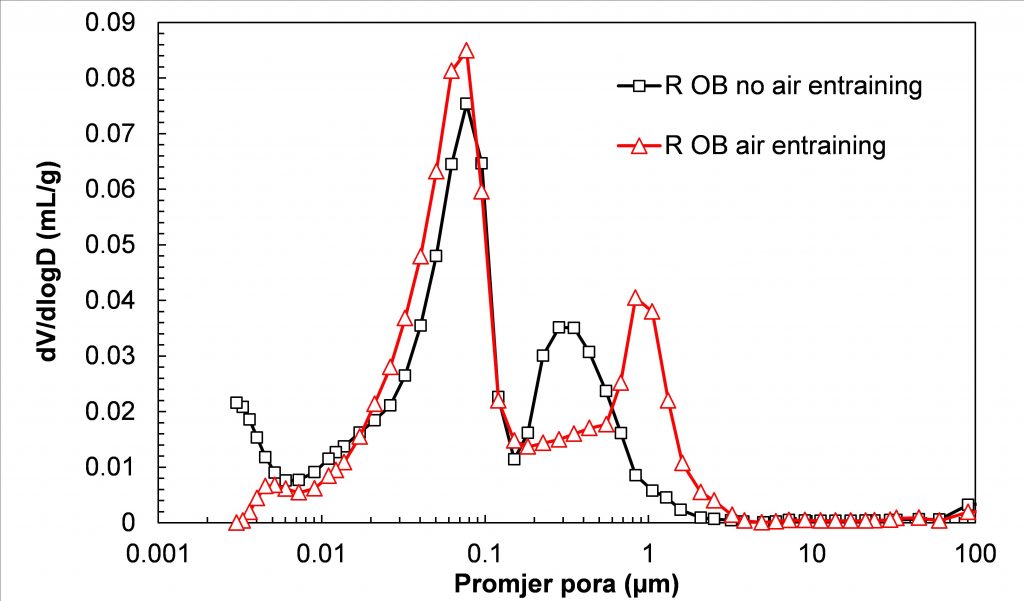
Mercury Intrusion Porosimetry is used to measure the porosity and pore size distribution of cementitious material. It is a fast method that allows obtaining information about the structure of the pores. A mercury porosimetry can measure the pore diameter, which varies from 0.001 µm to 1000 µm depending on the pressure used to inject the mercury.
- Example of use: Analysis of pastes with different types of binders.
From the distribution of pores as a function of their size (percolation size or size of the pore neck), it is evident that in the case of the mixture based on Ordinary Portland Cement (OPC), there are more of larger (˃ 100 nm) pores, compared to the mixtures based on nano-silica (nSi) and the mixture based on fly ash and silica fume (lpH).

Moreover, there is a difference in the amount of gel micropores (˂ 4.5 nm) and mesopores (4.5 – 50 nm) observed for the three different blends. Mixtures based on binders with pozzolanic materials (nSi and pH mixtures) have a higher percentage of pores with a size range around 10 nm and below. The test was carried out with NEWFELPRO project PHENEMICS.
- Example of use: Analysis of concrete with air entraining admixtures

Using MIP, it was possible to identify the efficiency of air entrainment. The addition of this chemical admixture resulted in larger pores being trapped in the matrix, which was visible in the shift of the peak to larger pores, compared to the system without air entrainment. The tests were carried out as part of the FP7 project Anagennisi.